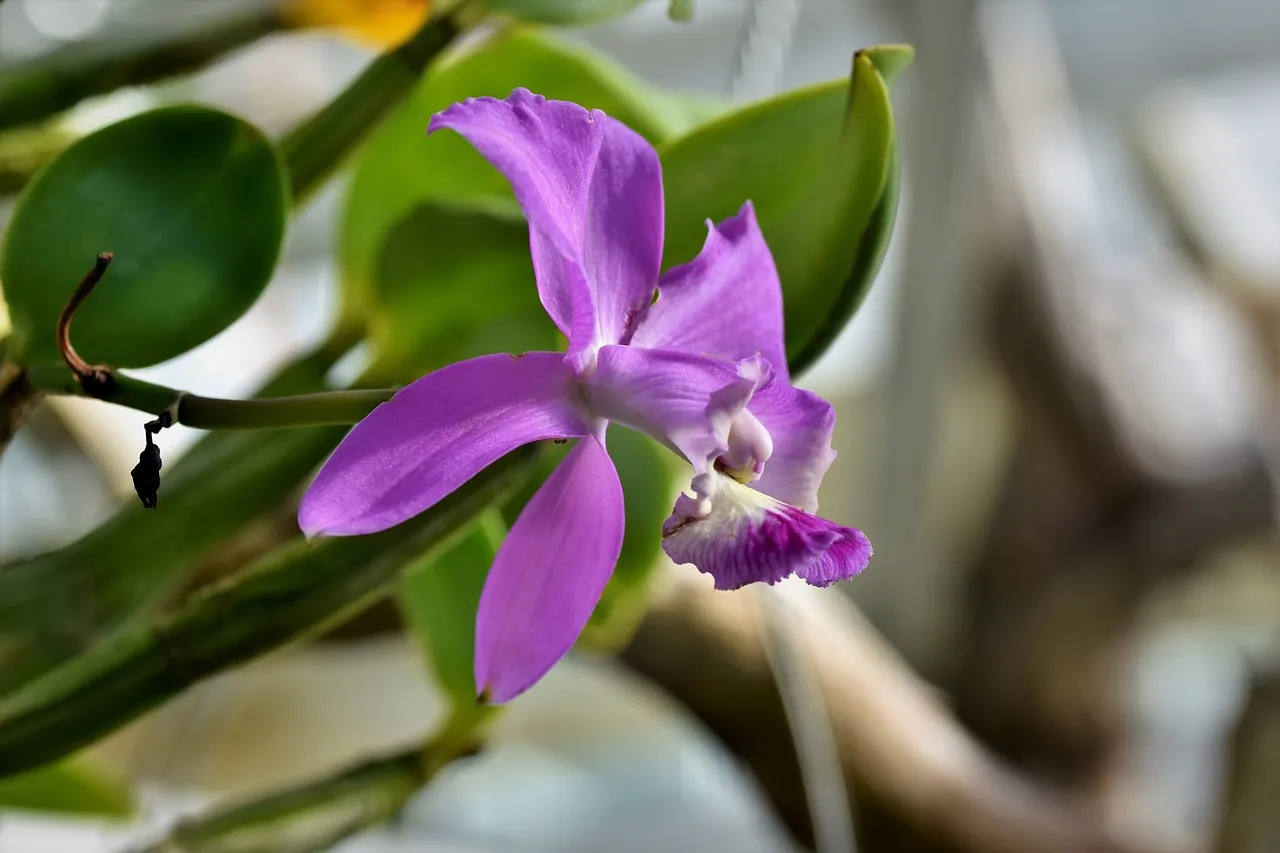Welcome to our blog post on “Year-Round Orchid Care: Balcony Gardening Tips & Tricks!” Orchids have long been cherished for their exquisite beauty and delicate charm. If you’re a gardening enthusiast with limited space, a balcony can serve as the perfect oasis for cultivating these fascinating plants. In this article, we will explore essential techniques and insights to help you maintain flourishing orchids throughout the year, right on your very own balcony. Whether you’re a seasoned orchid grower or a beginner with a green thumb, these tips and tricks will equip you with the knowledge and confidence to create a thriving orchid haven in any season. So let’s delve into the world of balcony gardening and discover the secrets to successful year-round orchid care!
The Magic of Orchids: Unveiling Their Enchanting Beauty
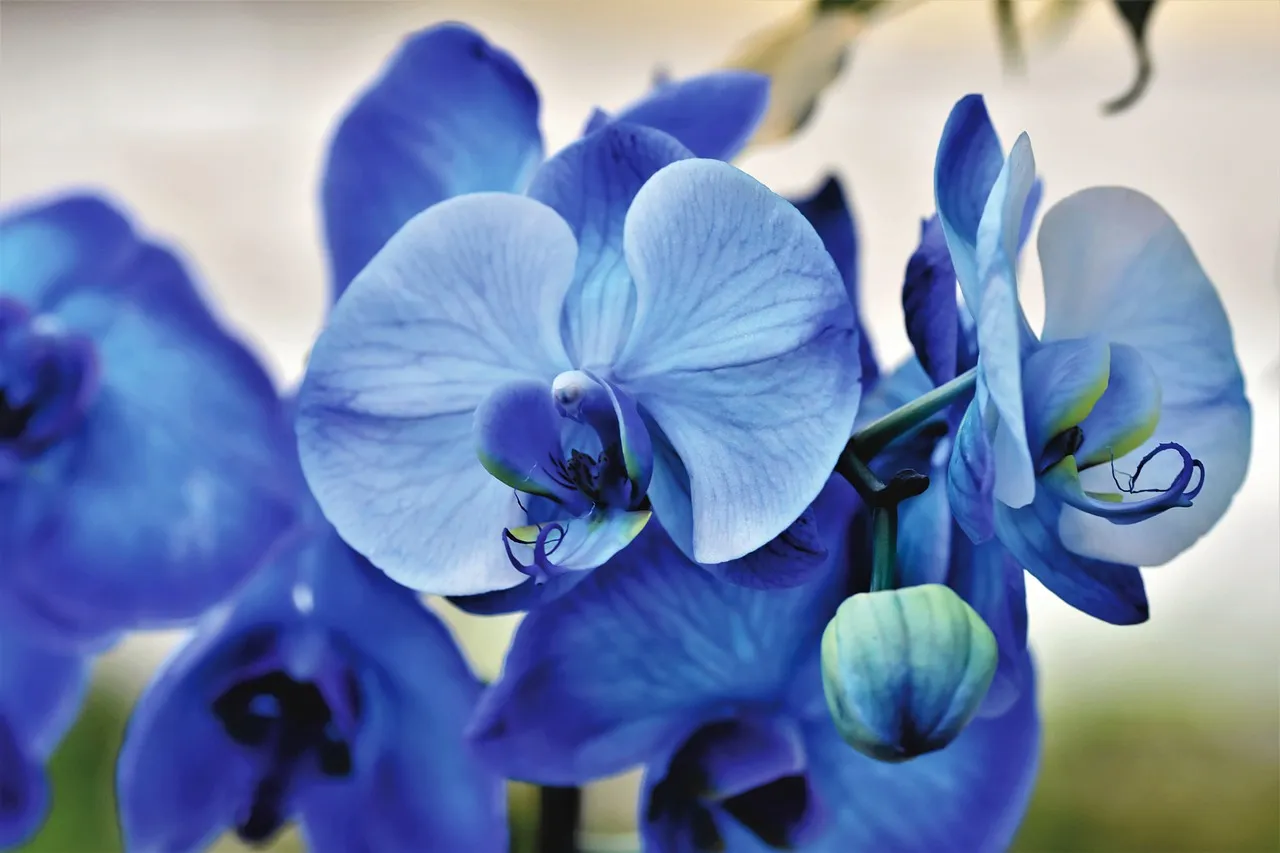
Orchids, with their exquisite and captivating allure, have long been revered as nature’s delicate masterpieces. These enchanting flowers possess a unique charm that transcends seasons, making them an ideal choice for year-round balcony gardening. The allure of orchids lies not only in their stunning blooms but also in their diverse range of colors, shapes, and fragrances. Whether you’re a seasoned gardener or a novice enthusiast, cultivating orchids on your balcony can be a rewarding and magical experience.
With the right care and a few clever tricks, you can enjoy the mesmerizing beauty of orchids throughout the year, transforming your balcony into a vibrant oasis of natural splendor. So, let’s delve into the secrets of year-round orchid care and discover the wonders that these captivating flowers have in store for us.
Orchid Types: Choosing the Perfect Varieties for Your Balcony
When it comes to year-round orchid care and creating a stunning balcony garden, selecting the right orchid varieties plays a crucial role. With a vast array of orchid types available, each boasting its own unique characteristics and care requirements, it’s essential to choose varieties that thrive in your specific climate and growing conditions. Phalaenopsis, also known as moth orchids, are a popular choice for beginners due to their resilience and ability to bloom for extended periods. Dendrobium orchids, with their vibrant colors and graceful blooms, add a touch of elegance to any balcony garden.
For those seeking a more exotic appeal, Cymbidium orchids offer impressive sprays of flowers in various shades. Oncidium orchids, commonly referred to as “dancing ladies,” delight with their intricate patterns and delightful fragrance. Additionally, Cattleya orchids are known for their bold and showy blooms that make a striking statement. By selecting the perfect orchid varieties for your balcony, you can ensure a year-round display of beauty that will leave you and your guests in awe.
Setting Up Your Balcony Garden: Orchid Placement and Lighting
Creating a thriving year-round orchid garden on your balcony requires careful consideration of orchid placement and lighting. Orchids, known for their specific light requirements, need a balance of light and shade to flourish. When positioning your orchids on the balcony, aim for a spot that receives bright, indirect light for a significant portion of the day. Avoid direct sunlight, especially during the hottest hours, as it can scorch the delicate leaves and flowers. If your balcony doesn’t provide enough natural light, consider using artificial lighting, such as fluorescent or LED grow lights, to supplement the light needs of your orchids.
As for placement, ensure proper air circulation around your orchids to prevent the buildup of stagnant air, which can lead to fungal and bacterial issues. Additionally, protect your orchids from extreme weather conditions, such as strong winds or heavy rains, by providing them with adequate shelter or using screens to diffuse the impact. By carefully selecting the right location and providing optimal lighting conditions, you’ll create an ideal environment for your orchids to thrive and enchant with their mesmerizing beauty throughout the year.
Orchid Potting: Selecting the Right Containers and Potting Mix
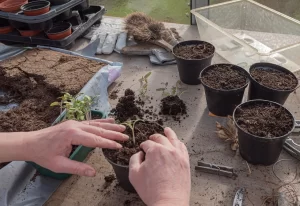
Proper orchid potting is essential for ensuring the health and longevity of your balcony garden. When it comes to selecting containers for your orchids, opt for pots with good drainage to prevent waterlogging, which can lead to root rot. Clay pots are a popular choice as they allow for better air circulation and moisture control. Additionally, consider the size of the pot relative to the size of the orchid. Orchids prefer snug spaces, so choose a container that accommodates the roots without being excessively large.
Equally important is the selection of the right potting mix. Orchids have unique growing requirements and often thrive in a loose, well-draining medium. Orchid bark or a mixture of bark, sphagnum moss, and perlite is commonly used to provide a suitable growing environment. These materials allow for proper air circulation and moisture retention while preventing the roots from becoming waterlogged. Avoid using regular potting soil, as it can be too dense and retain too much moisture, leading to root suffocation.
When repotting your orchids, ensure that you use a clean pot and fresh potting mix to avoid the risk of introducing pests or diseases. Carefully inspect the roots, removing any dead or decaying portions before placing the orchid into the new pot. Gently fill the pot with the potting mix, making sure the roots are adequately covered while leaving space for new growth. Finally, give the newly potted orchid a thorough watering, allowing any excess water to drain away.
By selecting the right containers and potting mix for your orchids, you provide them with a stable and nurturing environment that promotes healthy growth and ensures their enchanting beauty graces your balcony garden throughout the year.
Watering Orchids: Balancing Moisture Levels for Healthy Growth
Proper watering is a crucial aspect of year-round orchid care in your balcony garden. Orchids have unique moisture requirements, and striking the right balance is essential for their healthy growth. Overwatering can suffocate the roots, leading to root rot, while underwatering can cause dehydration and hinder their development.
When it comes to watering your orchids, it’s best to follow the “dry but not dry” approach. Allow the top layer of the potting mix to dry out slightly between waterings. To determine if it’s time to water, gently insert your finger into the growing medium up to the first knuckle. If it feels dry at that depth, it’s usually a good indication that watering is needed.
When watering, use room temperature water to avoid shocking the orchid’s sensitive roots. Pour water evenly over the potting mix until it begins to drain from the bottom of the pot. Ensure thorough watering, but avoid leaving the orchid sitting in excess water as it can lead to root rot. Remember that orchids generally prefer to be slightly under-watered than over-watered.
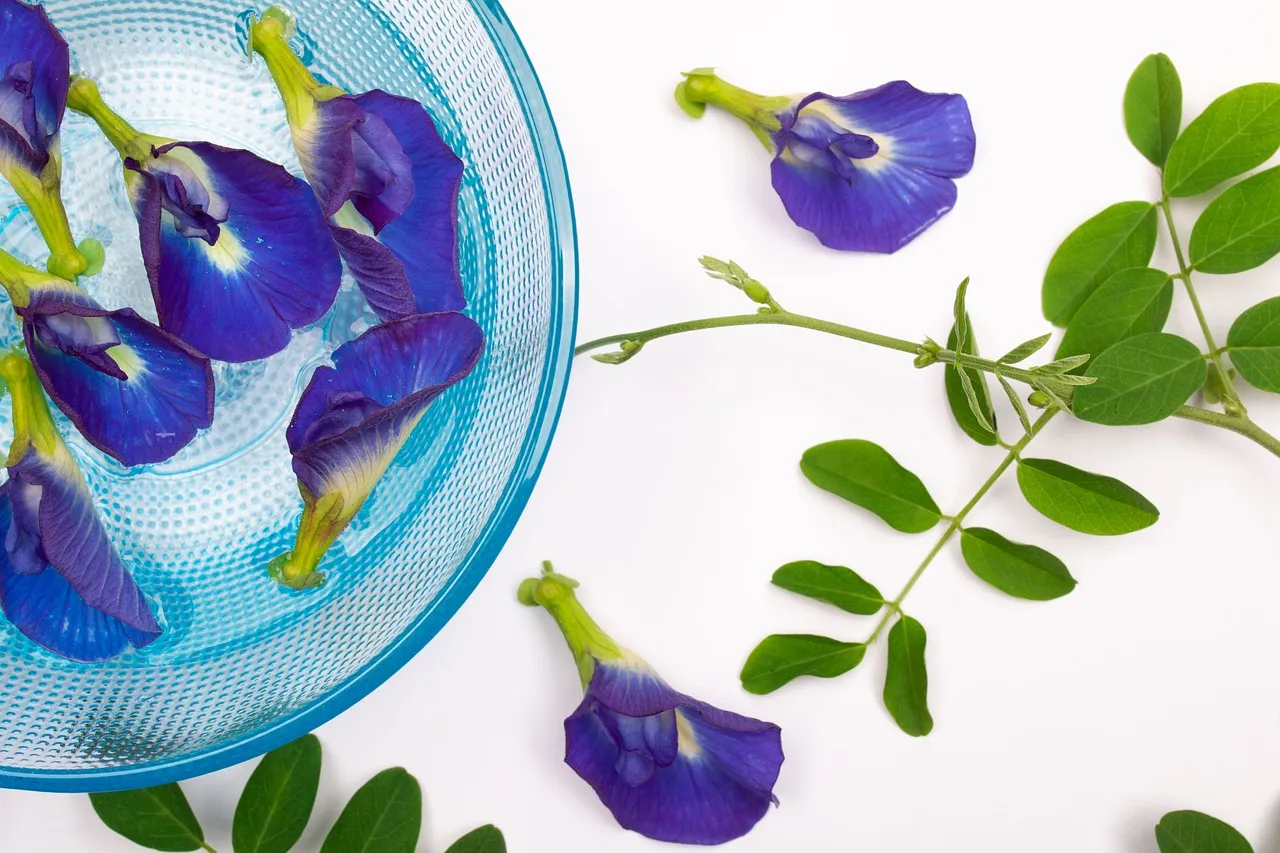
In addition to regular watering, it’s beneficial to provide humidity for your orchids, especially if your balcony tends to have low humidity levels. You can create a humid environment by placing a tray of water near the orchids or using a humidifier. Misting the leaves occasionally can also provide a boost of moisture, but avoid misting the flowers directly as it can cause damage.
It’s important to note that the watering frequency may vary depending on factors such as temperature, humidity, and the specific needs of the orchid species you’re growing. Observe your orchids closely and adjust your watering routine accordingly.
By striking the right balance and ensuring appropriate moisture levels, you’ll provide optimal conditions for your orchids to thrive and display their enchanting beauty on your balcony throughout the year.
Fertilizing Orchids: Nourishing Your Plants for Vibrant Blooms
To achieve vibrant blooms and promote healthy growth in your balcony garden, proper fertilization of orchids is essential. Orchids have unique nutritional needs, and providing them with the right balance of nutrients will enhance their overall health and beauty.
When it comes to fertilizing orchids, it’s important to use a specialized orchid fertilizer that is specifically formulated for their requirements. These fertilizers are often balanced and contain essential elements like nitrogen (N), phosphorus (P), and potassium (K), along with trace elements such as magnesium and calcium. They are available in various forms, including liquid, granular, and slow-release pellets.
Before applying any fertilizer, it’s crucial to water your orchids thoroughly. This helps prevent the risk of fertilizer burn and allows for better absorption of nutrients. Dilute the orchid fertilizer according to the instructions provided by the manufacturer. It’s advisable to fertilize your orchids at regular intervals, typically every two to four weeks during the active growing season.
When applying the fertilizer, take care not to let it come into direct contact with the leaves or roots of the orchid, as it may cause damage. Instead, apply the fertilizer solution to the potting mix, allowing it to distribute evenly. Avoid overfertilizing, as it can lead to salt buildup in the potting mix, which is harmful to the orchids. If you notice any signs of fertilizer burn, such as brown leaf tips or wilting, flush the potting mix with plain water to remove any excess salts.
Additionally, it’s important to adjust the fertilization schedule during the dormant period or when the orchids are not actively growing. During this time, it’s generally best to reduce or halt fertilization until the plants enter their next growth phase.
By providing the right nutrients at the right time, you’ll nourish your orchids and promote the development of vibrant blooms that will enhance the beauty of your balcony garden. Remember to follow the instructions on the fertilizer packaging and monitor your orchids closely to ensure they receive optimal care throughout the year.
Temperature and Humidity: Orchid Care in Different Seasons
Understanding the impact of temperature and humidity on your orchids is crucial for year-round care in your balcony garden. Orchids have specific preferences when it comes to these environmental factors, and adjusting them according to the changing seasons will promote their overall health and well-being.
During the warmer months, it’s important to provide adequate air circulation and ventilation to prevent your orchids from overheating. If the temperature rises significantly, consider providing shade or using sheer curtains to filter the intensity of direct sunlight. Additionally, you can place a small fan nearby to promote airflow and prevent stagnant air, which can lead to the development of fungal or bacterial diseases.
In cooler seasons, protecting your orchids from low temperatures is essential. Cold drafts or sudden temperature drops can harm your orchids, so avoid placing them in areas with chilly winds or near open windows during cold nights. If necessary, you can use a portable greenhouse or bring your orchids indoors during the coldest months to provide them with a more stable temperature environment.
Humidity is another critical factor in orchid care. Most orchids thrive in environments with moderate to high humidity levels. To increase humidity, especially in drier climates or during the winter when indoor heating can cause dry air, you can use a humidifier or place a tray of water near your orchids. This will help create a microclimate that mimics their natural habitat. Misting the leaves occasionally can also provide a boost of humidity, but avoid misting the flowers directly as it can cause damage.
Monitoring and adjusting temperature and humidity levels according to the changing seasons will help maintain the optimal conditions for your orchids. By providing the right balance of temperature and humidity, you’ll ensure their well-being and enjoy the magnificent beauty they bring to your balcony garden throughout the year.
Orchid Pests and Diseases: Prevention and Treatment Tips
However, if you do encounter pests or diseases, there are a variety of remedies available. For minor infestations, manual pest removal by gently wiping with a soft cloth or using a cotton swab dipped in rubbing alcohol is effective. For more stubborn pests, you can use insecticidal soap or gardening oil designed specifically for orchids. It is important to strictly follow the manufacturer’s instructions and avoid using excessive amounts of chemicals.
For diseases such as fungal or bacterial infections, remove and discard infected plant parts immediately to prevent further spread. If necessary, carefully apply a recommended fungicide or fungicide to your orchids as directed. Ensure optimal growing conditions for your orchids, as healthy plants are more resistant to disease.
By monitoring your orchids regularly, practicing good hygiene, and responding quickly to pest and disease problems, you can keep your balcony garden thriving and your orchids in optimal health. By proactively preventing and treating these problems, you can enjoy the beauty of your orchids all year round.

If you do encounter pests or diseases, there are various treatment options available. For minor infestations, manually removing pests by gently wiping them off with a soft cloth or using a cotton swab dipped in rubbing alcohol can be effective. For more stubborn pests, you can use insecticidal soaps or horticultural oils specifically formulated for orchids. It’s important to carefully follow the instructions provided by the manufacturer and avoid using excessive amounts of chemicals.
When dealing with diseases, such as fungal or bacterial infections, promptly remove and dispose of infected plant parts to prevent further spread. If necessary, apply a fungicide or bactericide recommended for orchids, following the instructions closely. Ensure that your orchids have optimal growing conditions, as healthy plants are more resistant to diseases.
Regularly monitoring your orchids, practicing good hygiene, and promptly addressing any pest or disease issues will help keep your balcony garden thriving and your orchids in optimal health. By being proactive in preventing and treating these challenges, you can enjoy the beauty of your orchids throughout the year.
Repotting Orchids: When and How to Repot for Optimal Growth
Repotting your orchids at the right time and in the proper manner is essential for their optimal growth and well-being in your year-round balcony garden. Understanding when and how to repot your orchids will help ensure they have sufficient space for root development and access to fresh growing medium.
The general rule of thumb is to repot your orchids every one to two years, or when you notice overcrowded roots or a decline in plant health. Signs that your orchid may require repotting include roots spilling over the edges of the pot, a potting mix that has broken down or become compacted, or poor drainage despite proper watering practices.
When it’s time to repot, start by carefully removing the orchid from its current pot. Gently tease out the roots and inspect them for any signs of damage, rot, or pests. Trim away any dead or decaying roots with sterile pruning shears. If the orchid has multiple pseudobulbs, consider dividing it into multiple plants to allow for better growth and blooming.
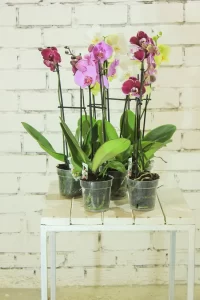
Select a new pot that is only slightly larger than the previous one. Ensure it has drainage holes and use a potting mix specifically formulated for orchids, such as a mixture of bark, sphagnum moss, and perlite. Place a layer of the potting mix at the bottom of the pot, position the orchid with its roots spread out, and gently fill the pot with the potting mix, ensuring the roots are adequately covered but not buried too deeply.
After repotting, water the orchid thoroughly to settle the potting mix around the roots. Allow any excess water to drain away before placing the orchid back in its desired location on the balcony.
It’s important to note that repotting can be stressful for orchids, so avoid repotting while the plant is in active bloom or during extreme weather conditions. Instead, aim for a time when the orchid is in a resting or growth phase.
By knowing when and how to repot your orchids, you can provide them with a fresh start and ample room for growth, ensuring they thrive and enchant your balcony garden with their vibrant beauty throughout the year.
Orchid Pruning and Trimming: Enhancing Plant Shape and Health
Pruning and trimming are essential practices for maintaining the shape and promoting the overall health of your orchids in your year-round balcony garden. By carefully pruning and trimming your orchids, you can encourage new growth, control the plant’s size, and ensure proper airflow.
One of the primary goals of pruning orchids is to remove dead or damaged parts. Regularly inspect your orchids for any yellowing or withered leaves, wilted stems, or spent flowers. Using sterilized pruning shears or scissors, carefully trim away these unwanted parts at the base, making clean cuts to prevent any tearing or damage to the remaining healthy tissues.
Pruning also helps control the size and shape of your orchids. If your orchid has become too large or leggy, you can trim back the stems or canes to promote bushier growth and more compact shape. Consider cutting just above a node or dormant bud to encourage new shoots to emerge.
As you prune, it’s important to ensure proper airflow around your orchids. Trim any overcrowded areas or excessively dense foliage that may impede air circulation. This helps prevent the buildup of stagnant air and reduces the risk of fungal or bacterial diseases.
When pruning, always use clean and sterilized tools to prevent the spread of any potential pathogens. You can disinfect your tools by wiping them with rubbing alcohol or using a diluted bleach solution.
It’s important to note that different orchid species may have specific pruning requirements, so it’s recommended to research and understand the needs of your particular orchid variety before pruning. Some orchids may require minimal pruning, while others may benefit from more frequent and precise trimming.
By incorporating pruning and trimming into your orchid care routine, you can enhance the shape and health of your plants, promote new growth, and maintain a visually appealing balcony garden throughout the year. Remember to approach pruning with care and precision, always prioritizing the well-being of your orchids.
Propagating Orchids: Multiply Your Collection with Easy Methods
Expanding your orchid collection can be an exciting endeavor, and propagating orchids allows you to multiply your plants while adding diversity to your year-round balcony garden. With a few easy methods, you can successfully propagate your orchids and enjoy the rewarding process of growing new plants.
One common method of propagating orchids is through division. This involves separating the orchid into multiple plants, each with its own set of roots and growth points. Choose a mature orchid with several pseudobulbs, and carefully remove it from its pot. Gently divide the orchid, ensuring that each division has enough healthy roots and at least one pseudobulb. Plant each division in a separate pot with fresh orchid potting mix, and provide them with the same care and growing conditions as the parent plant.
Another popular propagation method for orchids is through keiki production. Keikis are small plantlets that develop along the nodes of the orchid’s stem. They can be encouraged to grow by providing the right conditions, such as higher humidity levels or by placing the orchid in a slightly smaller pot. Once the keiki has developed a few roots, it can be carefully separated from the parent plant and potted up on its own.
Orchids can also be propagated through backbulbs, which are older, dormant pseudobulbs that can still produce new growth. Remove the backbulb from the parent plant, ensuring that it has viable roots and at least one healthy bud or growth point. Plant the backbulb in a small pot with fresh potting mix, keeping it slightly more shaded and providing regular moisture until new growth emerges.
Regardless of the propagation method you choose, it’s important to provide the newly propagated orchids with proper care and attention. Ensure they are in an appropriate growing medium, provide adequate light, temperature, and humidity levels, and avoid overwatering during the initial stages of growth.
Propagating orchids allows you to expand your collection, share plants with others, and witness the growth and development of new orchids. With patience and the right techniques, you can multiply your orchids and create a flourishing balcony garden that showcases the beauty and diversity of these enchanting plants throughout the year.
Orchid Blooming: Extending the Flowering Period for Longer Enjoyment
The stunning blooms of orchids are a highlight of any balcony garden, and with a few tips and tricks, you can extend the flowering period of your orchids for prolonged enjoyment. By providing the right care and creating optimal conditions, you can encourage your orchids to bloom for an extended period, adding beauty and elegance to your year-round garden.
Proper light exposure is crucial for orchid blooming. Most orchids thrive in bright, indirect light. Find the right balance by placing your orchids in a location where they receive adequate light without direct exposure to intense sunlight, which can cause damage. Observe the natural light patterns on your balcony throughout the day and adjust the placement of your orchids accordingly.
Maintaining consistent temperature conditions can also promote longer blooming. Many orchids require a difference in daytime and nighttime temperatures to initiate and sustain flower development. Research the specific temperature requirements of your orchid variety and provide the appropriate conditions. During the blooming period, avoid exposing your orchids to drastic temperature fluctuations or drafts that can cause stress and affect flower longevity.
Proper watering methods are critical in extending the flowering time. Between waterings, orchids enjoy a somewhat drier climate. Overwatering can cause root rot and impede blossoming. Before watering, gently push your finger into the potting mix to check the moisture level. It’s time to water if it seems dry to the touch. Maintain proper drainage and avoid allowing your orchids to sit in standing water, since this can cause root issues.
Applying a bloom-boosting fertilizer during the active growth and blooming phases can also support prolonged blooming. Look for a balanced orchid fertilizer specifically formulated for blooming plants. Follow the instructions provided by the manufacturer and apply the fertilizer at regular intervals to provide your orchids with the necessary nutrients for vibrant and long-lasting blooms.
Lastly, proper orchid grooming can help extend the blooming period. Remove spent flowers and yellowing leaves promptly to redirect the plant’s energy toward new flower development. Prune any damaged or overcrowded areas to promote better air circulation and prevent the spread of diseases.
By implementing these strategies, you can encourage your orchids to bloom for an extended period, allowing you to relish their captivating beauty and fragrance throughout the year. With patience, care, and attention to detail, you can create a balcony garden filled with an abundance of breathtaking orchid blooms.
Winter Care for Orchids: Protecting Your Plants from Cold Snaps

As the colder months approach, it’s essential to provide proper winter care for your orchids on the balcony to safeguard them from cold snaps and ensure their well-being. Orchids are generally tropical plants that thrive in warmer conditions, so it’s crucial to take necessary precautions to protect them during winter.
Firstly, consider the placement of your orchids. During winter, move them away from drafty areas or windows that may expose them to cold winds. Find a location that provides adequate light and maintains a relatively stable temperature. Balconies with some form of insulation, such as windbreakers or clear plastic covers, can offer additional protection from chilling winds.
Maintaining proper temperature levels is crucial for orchid survival during winter. Most orchids prefer temperatures between 60°F and 80°F (15°C to 27°C). Avoid exposing your orchids to sudden temperature drops, as extreme cold can damage or even kill the plants. If temperatures regularly drop below the ideal range, consider using a space heater or insulation materials to maintain a warmer microclimate around your orchids.
Watering properly is crucial in the winter. In cooler climates, orchids need less water. Before watering, ensure sure the soil is dry and at the proper level. Be careful not to overwater plants since too much moisture might lead to root rot. It is advised to water orchids in the morning so that the leaves have time to dry out before dusk in order to prevent fungal illnesses.
Humidity is another critical factor for winter orchid care. Cold air tends to be drier, which can affect the humidity levels around your plants. Increase humidity by placing a tray with water near your orchids or using a humidifier. Alternatively, misting the foliage lightly can also help maintain humidity. However, avoid misting too frequently, as excessive moisture can promote fungal growth.
Monitor your orchids closely during the winter months for any signs of stress or damage. Keep an eye out for yellowing leaves, wilting, or other abnormalities, which may indicate a problem. Promptly address any issues by adjusting the growing conditions or seeking appropriate treatment if needed.
By providing the necessary protection and care, you can ensure your orchids survive the cold snaps of winter and maintain their health and vitality. With thoughtful attention to their needs, your balcony garden can continue to thrive year-round, and your orchids can enchant you with their beauty, even in the chill of winter.
Orchid Care Mistakes to Avoid: Common Pitfalls and How to Overcome Them
While caring for orchids can be rewarding, it’s important to be aware of common pitfalls to ensure the well-being of your plants in your year-round balcony garden. By avoiding these orchid care mistakes and knowing how to overcome them, you can provide the best possible care for your orchids and help them thrive.
One common mistake is overwatering. Orchids are susceptible to root rot if they’re constantly sitting in wet or soggy conditions. Instead, practice a careful watering routine by allowing the potting mix to dry out partially between waterings. Use your finger to check the moisture level in the mix before watering and adjust accordingly. Remember, it’s better to slightly underwater than overwater your orchids.
Insufficient light is also a common hazard. Orchids need the right amount of light to grow and flower successfully. They generally prefer bright, indirect light, but some orchid species may have specific light requirements. Research the lighting needs of your particular orchid type to find the ideal spot on your balcony that provides the right level of light. If natural light isn’t enough, consider using artificial grow lights to supplement your lighting.
Inadequate airflow and ventilation can also hinder orchid health. Poor air circulation can lead to increased humidity, which can create an environment conducive to fungal and bacterial diseases. Ensure proper spacing between your orchids and avoid overcrowding them. If necessary, use fans or provide natural ventilation to maintain airflow and reduce the risk of disease.
Orchid development may be hampered by using the incorrect potting soil. In order for oxygen to reach the roots of orchids, the medium must be well-drained. Regular potting soil should not be used since it might retain too much water and smother the roots. Instead, pick a specialized orchid potting mix that contains peat moss, perlite, and bark. For orchids, these combinations offer the perfect balance of drainage and moisture retention.
Neglecting to provide regular fertilization is another mistake to avoid. Orchids rely on nutrient-rich soil or fertilizers to support their growth and blooming. Use a balanced orchid fertilizer and follow the recommended dilution and application instructions. However, be cautious not to overfertilize, as this can lead to chemical burns and root damage. A slow-release or diluted fertilizer applied at regular intervals is generally sufficient.
By being mindful of these common orchid care mistakes and taking proactive measures to overcome them, you can ensure the health and vitality of your orchids on your balcony. With proper care, your orchids will reward you with vibrant blooms and a flourishing garden throughout the year.
Orchid Display and Aesthetics: Designing a Stunning Balcony Orchid Showcase
Creating a visually captivating display of your orchids on your balcony not only enhances the beauty of your space but also showcases the enchanting allure of these exquisite plants. By paying attention to design elements and incorporating aesthetic considerations, you can create a stunning balcony orchid showcase that becomes a focal point of your year-round gardening.
Consider the layout and arrangement of your orchids. Grouping orchids of different colors, sizes, and varieties together can create a dynamic and visually pleasing display. Place taller orchids at the back and shorter ones in the front to add depth and dimension. Experiment with different arrangements until you achieve a balanced and harmonious composition.
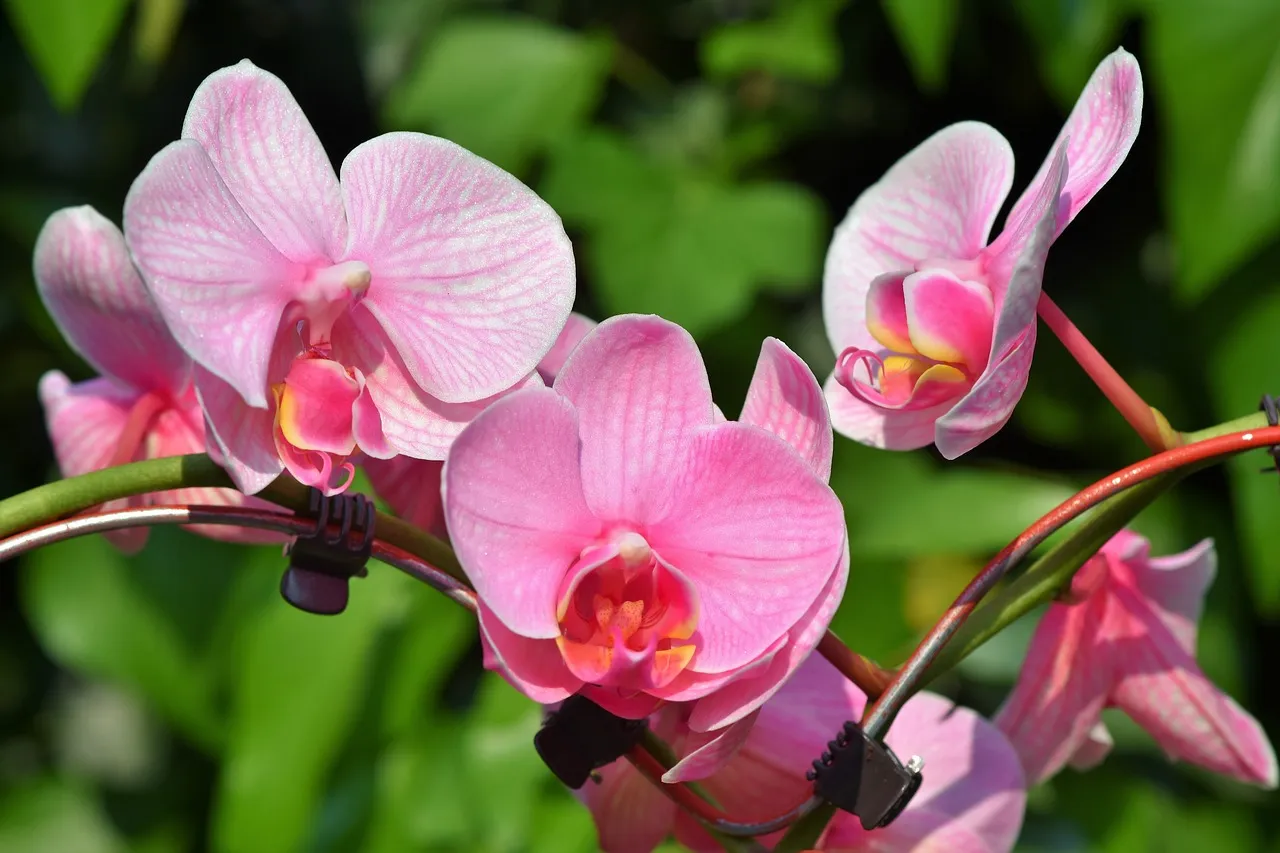
Select suitable containers that complement the beauty of your orchids. Opt for containers that are not only functional but also aesthetically pleasing. Consider the material, color, and shape of the pots or hanging baskets. Clay pots, wooden containers, or decorative ceramic planters can add an element of charm and elegance to your orchid display.
Incorporate visual interest through the use of accessories or decorative elements. Enhance your orchid showcase with trellises, plant stakes, or decorative rocks and pebbles. These elements not only add aesthetic appeal but also provide support and structure to your orchids. Be mindful not to overcrowd the space and maintain a sense of balance and harmony.
Strategically choose the backdrop for your orchid display. Consider the color and texture of your balcony walls or surrounding structures. A neutral backdrop, such as a white or light-colored wall, can make your orchids stand out and create a clean and sophisticated look. Alternatively, a lush green wall or hanging planters can create a natural and vibrant backdrop.
Pay attention to the overall ambiance and lighting of your orchid showcase. Lighting can greatly enhance the beauty of your orchids, especially during evening hours. Install soft and warm lighting fixtures or fairy lights to create a magical and inviting atmosphere. Experiment with different lighting angles and intensities to accentuate the unique features of your orchids.
Regular maintenance and grooming are crucial for maintaining the aesthetics of your orchid display. Remove spent flowers and trim any yellowing or withered leaves promptly. Ensure proper watering, fertilization, and general care to keep your orchids healthy and vibrant. Regularly clean and dust the leaves to maintain their natural sheen and luster.
Conclusion
In conclusion, mastering year-round orchid care for your balcony garden is an art that requires attention, knowledge, and patience. By following the valuable tips and tricks outlined in this blog post, you can provide the optimal care needed for your orchids to thrive. From understanding the various orchid varieties and their specific care requirements to selecting the right potting mix and providing adequate lighting, watering, and fertilization, you have gained valuable insights into the world of orchid care. Remember to adapt your care routine to the changing seasons, ensuring proper temperature and humidity levels, and protecting your orchids from pests and diseases.
Whether you’re a beginner or an experienced gardener, these orchid care tips will help you cultivate healthy plants and witness the mesmerizing beauty of their blooms. So embark on your orchid-growing journey, create stunning orchid arrangements, and revel in the joy of nurturing these magnificent plants. With dedication and a green thumb, your balcony can become a flourishing orchid garden, showcasing the exquisite charm of these captivating flowers. Happy gardening and may your orchids continue to grace your space with their elegance and allure!
#OrchidCare #BalconyGardening #GardeningTips
